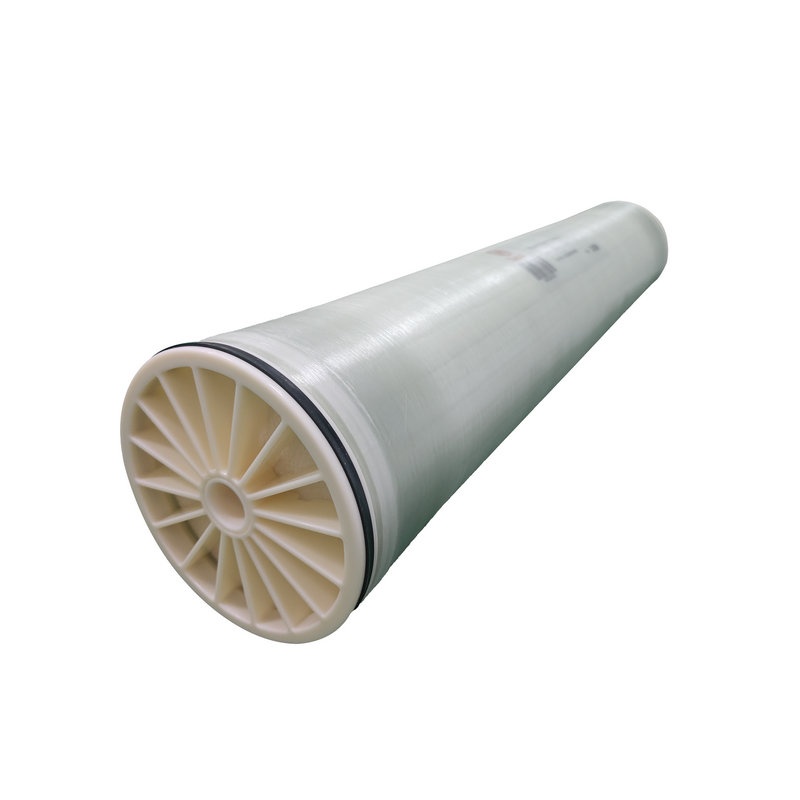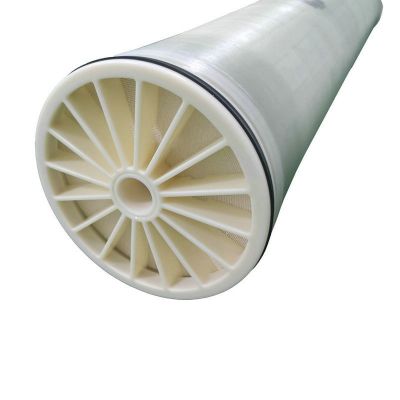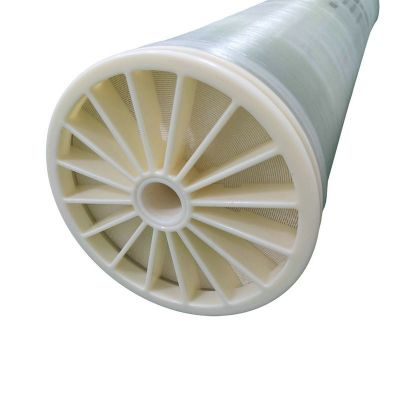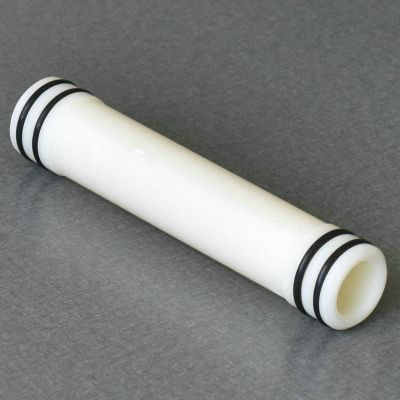General Information
TaFlux XLP series reverse osmosis TFXLP-8040 membrane element provides reliable performance and long service life at an extra low feed pressure, and can be widely used in pure water preparation and related industries.
Features & Advantages
- Extreme low working pressure
- Energy saving
- Economical efficiency
- Economical equivalent element for direct replacement
Applications
- Potable water
- Commercial water system
- Industrial process water
Specifications
-
Configuration: Spiral wound element
-
Membrane Polymer: Polyamide thin-film composite
Performance
|
Element Model |
Membrane Active Area ft2 (m2) |
Feed Spacer mil (mm) |
Permeate Flow Rate* GPD (m3/d) |
Stabilized Salt Rejection** |
Minimum Salt Rejection |
|
TFXLP-8040 |
400 (37.2) |
28 (0.712) |
11,000 (41.6) |
99.2% |
99.0% |
Element Dimensions
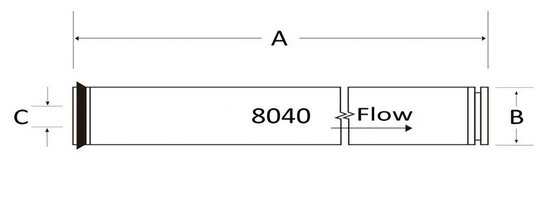
|
Model |
Length A |
Diameter B |
Permeate tube inner diameter C |
|
8040 |
40 (1,016) |
7.9 (201) |
1.125 (28.6) |
Operating and Cleaning Limits
|
Maximum Operating Pressure |
600 psi (41 bar) |
|
Maximum Operating Temperature |
45°C (113°F) |
|
Maximum Chlorine Concentration |
0.1 ppm |
|
pH Range, Continuous |
2-11 |
|
pH Range, Cleaning |
1-13 |
|
Maximum Feed SDI (15 mins) |
5 |
|
Maximum Element Pressure Drop |
15 psi (1 bar) |
|
Maximum Feed Flow |
17 m3/h |
 Tanal
Tanal
